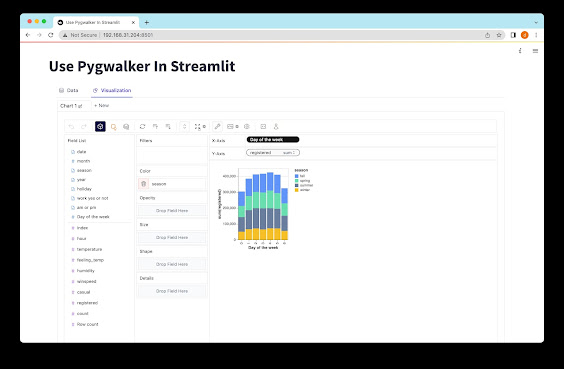Nvidia GPU ChatGPT: The Future of Conversational AI
In November 2022, OpenAI released a tool called ChatGPT, which uses natural language processing to generate responses to user input. Since then, the world of conversational AI has surged in popularity, with companies looking to use chatbots to service customer needs. However, generating text, image, and video content requires significant computational power and time. That’s where Nvidia comes in, with its line of GPUs specifically designed to accelerate inference workloads for generative AI applications, including ChatGPT.
The Importance of GPUs in AI
GPUs (graphics processing units) have been primarily used for graphics and gaming, but they have also found a significant role in AI training. AI models require massive amounts of data and computational power to learn, and GPUs can accelerate training by processing thousands of computations simultaneously.
But GPUs also have an important role in the inference side of AI, where the trained models are used to generate predictions or responses based on new input. Inference requires less computational power than training, but it still requires significant resources, especially for generative AI applications like ChatGPT.
Nvidia’s AI Inference GPUs
To address the need for accelerated inference for generative AI applications, Nvidia has released three AI inference GPUs, specifically designed for text, image, and video generation. Let's examine each of them in detail.
1. Nvidia H100 NVL
The Nvidia H100 NVL is a GPU designed for large language model (LLM) deployment, making it ideal for deploying massive LLMs like ChatGPT at scale. It features a transformer engine that Nvidia claims can deliver up to 12x faster inference performance for GPT-3 compared to the prior generation A100, at data center scale.
The H100 NVL is composed of two H100 GPUs built on the PCI form factor connected via an NVLink bridge. With 188GB of memory, it can deploy models ranging from 5 billion parameters to 200 billion parameters.
Ian Buck, Nvidia’s vice president of hyperscale and HPC computing, said during a press briefing that the H100 NVL will supercharge LLM inferencing. He also believes that it will democratize the ChatGPT use cases, bringing that capability to every server in every cloud.
2. Nvidia L40 for Image Generation
The Nvidia L40 for Image Generation is a GPU optimized for graphics and AI-enabled 2D, video, and 3D image generation. It delivers 7x the inference performance for stable diffusion, an AI image generator, compared to the previous generation chip. It also delivers 12x the performance for powering Omniverse workloads.
It is available from a select number of system builders and is already being used by startups like Descript and WOMBO to power their generative AI services for video and podcast creators and text-to-art generation, respectively. Google Cloud is also using L40 in its Vertex AI cloud service.
3. Nvidia L4 for AI Video
The Nvidia L4 for AI Video is a general-purpose GPU designed to accelerate video inference. According to Nvidia, it can deliver 120 times faster video inference than CPU servers. It can serve as a general GPU for any workload, making it an excellent choice for AI video applications.
4. Grace Hopper Processor
Finally, Nvidia’s new Grace Hopper processor excels at very large memory AI tasks for inference, including large recommender systems, vector databases, and graph neural nets. It features a 900 GB/s NVLink-C2C connection between CPU and GPU and delivers 7x faster data transfers and queries compared to PCIe Gen 5.
Buck believes that the Grace Hopper superchip will bring amazing value to large recommender systems and vector databases. It is expected to be available in the second half of the year.
Nvidia Software for AI Inference
All of the new inference GPUs come with Nvidia software, including the AI Enterprise suite. The suite includes Nvidia’s TensorRT software development kit (SDK) for high-performance deep learning inference and the Triton Inference Server, an open-source inference-serving software that standardizes model deployment.
The Triton Inference Server has been designed to make it easy for data scientists and developers to deploy AI models into production quickly. It supports multiple deep learning frameworks, including TensorFlow, PyTorch, and ONNX, and can be deployed on a range of hardware, including GPUs, CPUs, and SoCs.
Nvidia’s Partners for AI Inference
Nvidia’s inference GPUs are already being used by several companies to power their AI services. Descript, a startup catering to video and podcast creators, is using the L4 GPU in Google Cloud to power its generative AI service. WOMBO, another startup, is using L4 on Google Cloud to power its text-to-art generation service. Kuaishou is also using L4 on Google Cloud to power its short video service.
Google Cloud is also using Nvidia L40 in its Vertex AI cloud service, which provides pre-trained models and tools for developing AI applications. Several server makers, including ASUS, Dell Technologies, HPE, Lenovo, and Supermicro, offer the L4 GPU for private preview on Google Cloud. The H100 NVL and Grace Hopper are expected to be available in the second half of the year.
Conclusion
Nvidia’s new AI inference GPUs provide a significant boost to generative AI applications like ChatGPT, enabling organizations to deploy models at scale and generate more accurate and natural responses to user input. With the right combination of hardware and software, AI models can be deployed into production quickly and efficiently, making it easier for businesses to take advantage of the benefits of AI.
As AI becomes increasingly mainstream, we can expect to see more innovative and powerful AI hardware and software from companies like Nvidia. The future of AI inference is bright, and Nvidia is leading the way.

Comments
Post a Comment